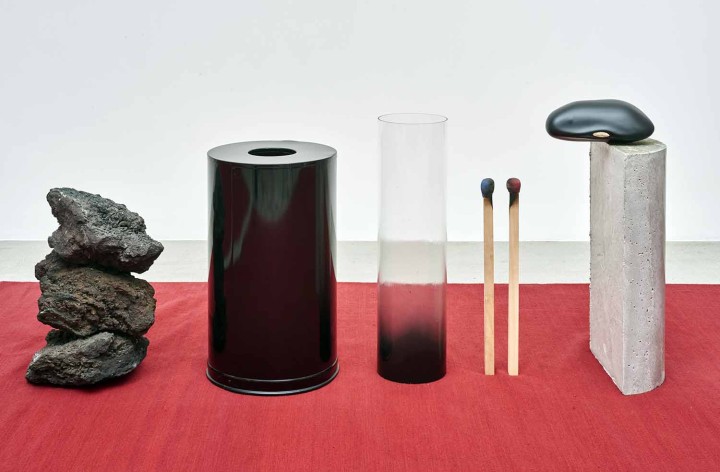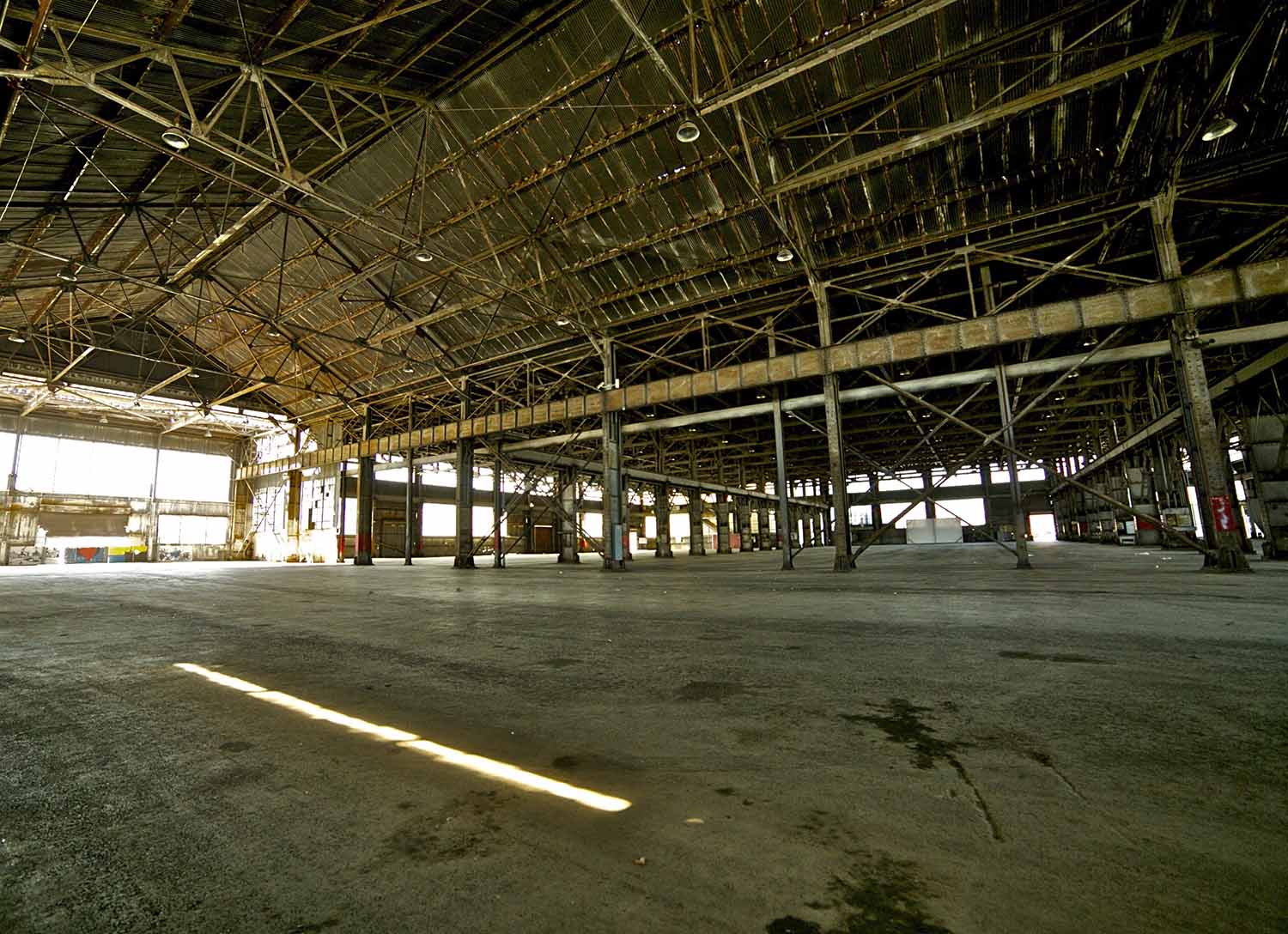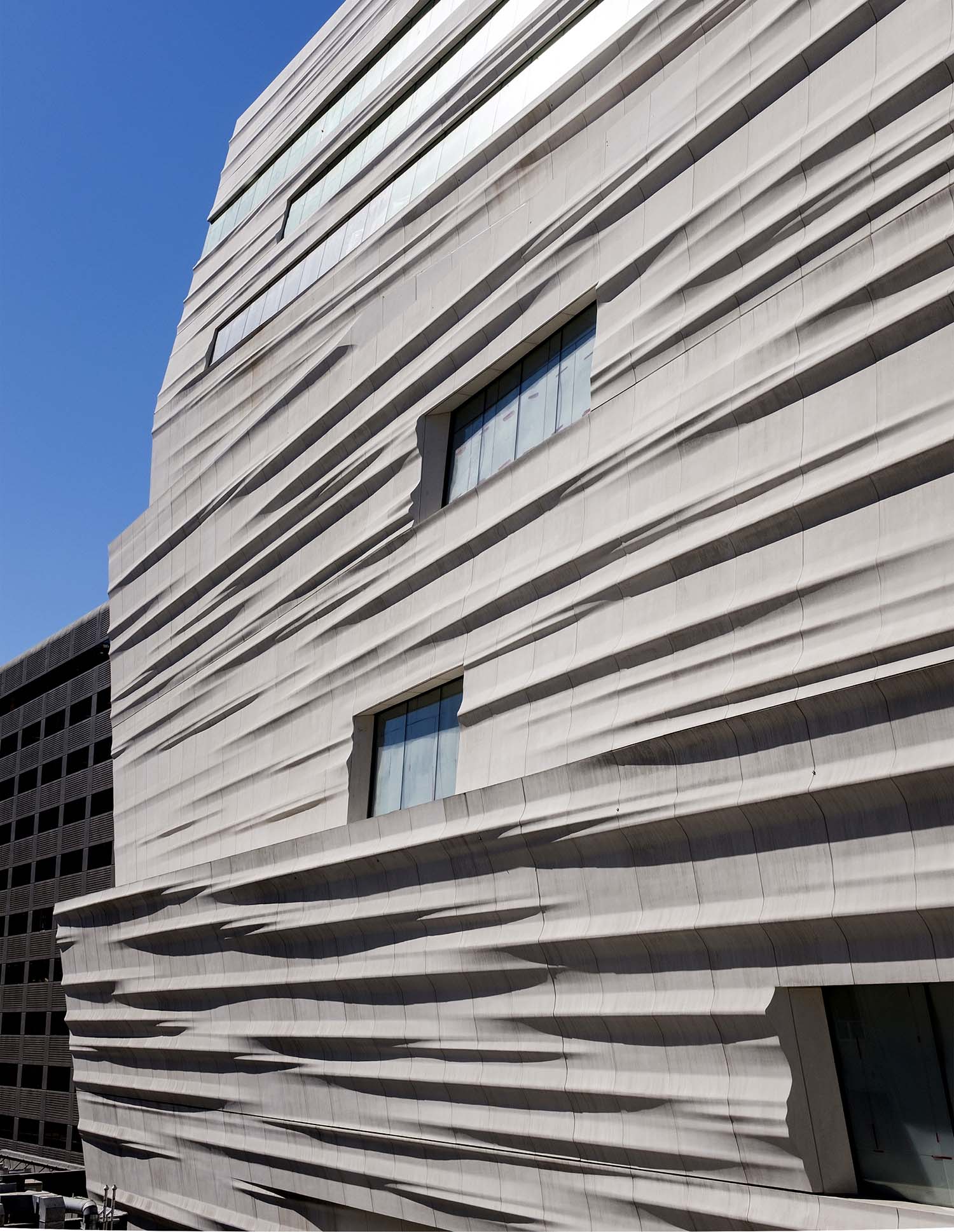In a sort of road show from its originating locale south of the U.S. border, kurimanzutto makes its debut in San Francisco at the temporary host site of Jessica Silverman Gallery, offering a survey of artists associated with the formerly nomadic Mexico City gallery.
Upon entering, visitors are channeled toward native American/European expat Jimmie Durham’s Arch de Triomphe For Personal Use (2015), a mostly wooden sculpture lampooning contemporary security procedures in its resemblance to a metal detector, with attached bench for waiting.
The floor space of the gallery is half-covered in a series of seven red carpets of varying dimensions, creating zones for the proliferation of pieces by other artists to play out upon or near, but also themselves embodying signs of an engagement by artist Danh Vo with Mexican artisans who make and use carmine dye from insects known as the cochineal. This traditional dyeing process was co-opted and exported by Spanish colonizers, and long used to color Vatican robes.
Red, along with black, serves as a motif that suffuses much of the work in the main gallery: for instance, in a tour-de-force wall piece by Abraham Cruzvillegas featuring 456 pieces of printed matter from events in the artist’s life arrayed in the shape of a giant fish — all over-painted in red and black acrylic to elide any other graphic or textual information beneath.
Gabriel Orozco performs the playful, studied flaneur, finding visual and tactile pleasure through the humblest tools: a fork drawn through graphite to make a series of stylized, larger-than-life beetles (more bugs), and a softball used to make uneven impressions in lumpish terracotta. The worldly pleasures of Leonor Antunes’s Anni (2015), meanwhile, are seductive across multiple senses. Referencing Bauhaus-trained textile artist Anni Albers, the work’s intensive stitched black leather elements, woven between white cotton rope to form a floor-to-ceiling net tapestry, exude more than a whiff of visceral aroma.
In this project’s iteration, kurimanzutto continues to bring into view works representing something both “indigenous” to Mexico while also pursuing international trajectories.



